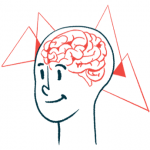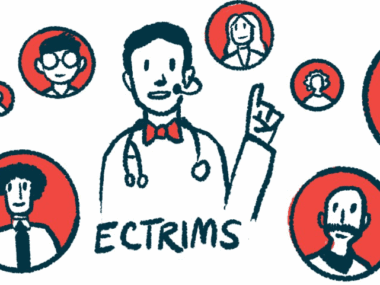Stem cell therapy may be better than some DMTs for highly active RRMS
Analysis finds clinical benefit similar between stem cell therapy and Ocrevus
Written by |

Stem cell therapy is better than Gilenya (fingolimod) or Tysabri (natalizumab) at reducing relapse rates and easing disability for people with highly active relapsing-remitting multiple sclerosis (RRMS), a new analysis suggests.
In contrast, findings suggest that the efficacy of stem cell therapy is not significantly different from treatment with Ocrevus (ocrelizumab). Yet, this analysis had a shorter follow-up time so researchers urged caution in interpreting the results.
“We show that over 5 years, [stem cell therapy] is associated with a lower risk of relapses and a higher chance of recovery from disability in highly active relapsing-remitting MS when compared with” Gilenya and Tysabri, researchers wrote. “Over the limited follow-up 3 years, we did not find its clinical effect superior to that of” Ocrevus.
The study, “Comparative Effectiveness of Autologous Hematopoietic Stem Cell Transplant vs Fingolimod, Natalizumab, and Ocrelizumab in Highly Active Relapsing-Remitting Multiple Sclerosis,” was published in JAMA Neurology.
Stem cell therapy designed to reset patient’s immune system
Autologous hematopoietic stem cell transplant (aHSCT) — better known as stem cell therapy — is an intensive procedure that aims to halt the inflammatory attack driving MS by resetting a person’s immune system.
The procedure involves harvesting a patient’s own hematopoietic stem cells — those residing in the bone marrow that are responsible for making mature immune cells. After an intensive chemotherapy or radiation therapy regimen designed to wipe out the entire immune system, the stem cells are infused back into the patient, where they are expected to repopulate the immune system with healthy cells that are not primed to attack the brain and spinal cord.
Although aHSCT is not specifically approved for MS in the U.S., many studies have shown it can help slow progression in RRMS, especially for people with early, highly active disease.
More than a dozen disease-modifying treatments (DMTs) have been approved for RRMS. All of them broadly work by reducing inflammation, thereby decreasing the risk of relapse or disability progression by slowing the inflammatory attack in the nervous system that drives MS symptoms.
The current study highlights that AHSCT may have advantages over some — but not all — existing DMTs used for the treatment of MS.
Tysabri and Ocrevus are newer DMTs that are considered high-efficacy, as they have been shown to have potent effects at reducing disease activity and slowing disability progression. Gilenya is a moderate-efficacy DMT that’s less potent than the others, although it’s also commonly used due to a better safety profile.
While aHSCT and DMTs may be beneficial for some RRMS patients, there has been minimal research comparing outcomes with these treatment strategies. Here, an international team of scientists conducted such an analysis using data collected from centers around the world.
In total, the researchers identified data on nearly 5,000 people with RRMS. Among them, 167 were treated with aHSCT, 2,558 with Gilenya, 1,490 with Tysabri, and 700 with Ocrevus.
Compared to patients treated with one of the three DMTs, those given aHSCT tended to be younger and have a shorter disease duration, but more severe disability scores. This was expected, the researchers said, since aHSCT is generally recommended for people with early and more aggressive disease.
To account for these differences between groups, the researchers conducted matching analyses — identifying patients with similar characteristics prior to treatment in each of the groups, then comparing outcomes in these subsets.
In a comparison of 144 patients given aHSCT and 769 given Gilenya, patients who underwent the stem cell therapy experienced significantly fewer relapses per year on average (0.09 vs. 0.20, a 74% reduction in the risk of relapses). The risk of worsening disability was comparable with both treatments, but the likelihood of disability becoming less severe was more than two times higher for patients given aHSCT than Gilenya.
Reduction in risk of relapse, severe disability seen after stem cell transplant
Another comparison included 146 patients given aHSCT and 730 treated with Tysabri. The average yearly relapse rate was lower among those given aHSCT (0.08 vs. 0.10), and though the difference was slight, it corresponded to a statistically significant, 49% reduction in the risk of relapses. As with Gilenya, the risk of worsening disability was not significantly different between aHSCT and Tysabri, but patients who underwent aHSCT were more than twice as likely to experience less severe disability following treatment.
The analysis for Ocrevus included 343 given the medication and 110 given aHSCT. Results showed no statistically significant differences between the two therapies in terms of relapse rates or disability-related outcomes.
The researchers noted that, due to the matching criteria, the typical follow-up time was notably shorter in the Ocrevus analysis — up to three years, compared to up to five years for the other two DMTs. The shorter follow-up time might have limited the statistical power of the study to detect a significant difference, so the researchers highlighted a need for further study to compare Ocrevus and aHSCT.
Another potential explanation, they noted, is the mechanism of action of the therapies: Gilenya and Tysabri are designed to alter the movement of inflammatory immune cells so they can’t get into the nervous system to cause MS-driving inflammation. By comparison, Ocrevus works by killing B-cells, a type of immune cell that plays a key role in the attack. Because Ocrevus kills cells rather than changing their movements, its mechanism of action “is more similar to the immunosuppressive effect of AHSCT,” the researchers wrote.
The scientists stressed that, while they tried to conduct accurate matching analyses between the different treatment groups, there was still notably more patient-to-patient variation in this analysis than is seen in randomized clinical trials. Several trials testing aHSCT in MS are currently ongoing to confirm the findings.
“Ultimately, head-to-head contemporaneous comparison in randomized clinical trials will provide the most robust assessment of the efficacy and safety of AHSCT,” a pair of U.S. researchers wrote in an editorial published alongside the study.
“After completion of these trials … we will have a better sense of the potential role for AHSCT and when and where it might be justified to use. Until that time, the current study highlights that AHSCT may have advantages over some — but not all — existing DMTs used for the treatment of MS,” they wrote.







